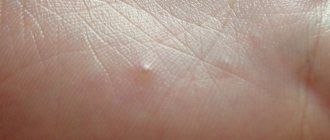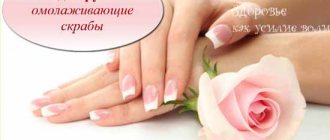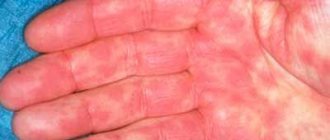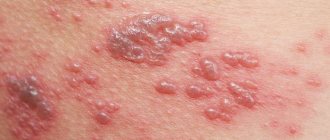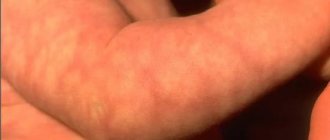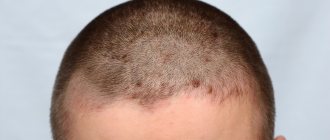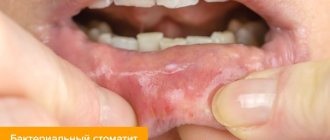What is arthrosis of the hand
The joint contains cartilage tissue, which for one reason or another changes. Defective areas form on it. They become thinner and bone growths (osteophytes) appear. Fingers acquire a characteristic unaesthetic lumpiness, which makes it difficult to perform familiar actions that require fine motor skills.
Neither arthrosis of the hands nor gonarthrosis are inherited: only a predisposition to it is transmitted. You can inherit metabolic characteristics, the nature of the tissues, the elasticity and density of articular cartilage. If your close relatives had prerequisites for treatment of osteoarthritis, think about it: you are at risk!
Causes
Arthrosis can be primary and secondary.
Primary arthrosis appears due to problems with the cartilage tissue of the joint, namely:
- genetic disorders in the composition of joint cartilage tissue;
- joint hypermobility;
- dysplasia, flat feet, wide feet.
Secondary arthrosis is the result of joint damage and other diseases. Among its reasons:
- injuries, microtraumatization of joints;
- acute and chronic arthritis, synovitis;
- metabolic disorders, lack of calcium, phosphorus and other minerals;
- gout, psoriasis, rheumatoid arthritis;
- diabetes mellitus and other diseases of the endocrine system.
What to do when you are young: simple recommendations
People of certain professions are especially susceptible to arthrosis of the hand - pianists, massage therapists, office managers and those who constantly type on the keyboard. If you suspect the possibility of developing this pathology, try to choose a different profession in your youth.
- Avoid injuries to the fingers and wrist joint. They most often provoke the development of dystrophic changes.
- Take special care during icy conditions, because when a person falls, he intuitively puts his hands up.
- Do not overuse exercises with dumbbells.
Take care of your hands from a young age
What to do after forty
After forty, hormonal changes become the main cause of coxarthrosis, gonarthrosis and arthrosis of the hand. With the onset of menopause in women, the situation worsens, especially in the area of the fingers. The level of estrogen in the body decreases - it begins to actively lose moisture, including in the joint. Cartilage experiences a moisture deficiency, becomes brittle and vulnerable.
At this age, it is especially important to lead a healthy lifestyle - just being in the fresh air and giving up bad habits. The condition of joints and cartilage tissue depends on the style of nutrition, the supply of oxygen and vitamins.
How to do preventive hand massage
With simple movements you can independently relieve tension and eliminate muscle spasms in your hands. Massage is necessary to improve blood circulation and normalize metabolism in the joints.
- First, warm your palms by rubbing them together.
- Using the thumb and index finger of one hand, rub each finger on the other hand in turn: from the base to the nail, and then back.
- Wrap your hand around your finger and rotate as if sharpening a pencil.
- Bend and straighten your fingers at a fast pace, without clenching them into a fist, 15-20 times.
Massaging your fingers only takes a few minutes
Rheumatoid arthritis
Rheumatoid arthritis is a systemic pathology of connective tissues, which mainly affects small joints in the form of destructive polyarthritis. Rheumatoid nodules are the most common cutaneous manifestation of this disease and are observed in approximately 30% of patients.
The size of these formations can vary - from 2 mm to 3 cm in diameter. As a rule, multiple rashes are observed. Nodules in rheumatoid arthritis are painless and are located inside the subcutaneous tissue. They can appear on the knuckle of the hand, but are somewhat less common on the pad of the finger.
Rheumatoid nodules are characteristic not only of arthritis; they are sometimes observed in diseases such as systemic lupus erythematosus. These formations are localized mainly on the bend of the finger, which complicates its movement. Nodules are often confused with tophi - specific signs of gout.
What to do if the first signs of arthrosis appear
If “nodules” appear on your fingers, it means that the disease has been developing for several years. It would be good if it could be detected much earlier, at the stage of the first aching pain. Do not ignore pain, which worsens at night, and slight swelling, even if they do not limit movement in the joint.
In the initial stages of arthrosis, it is recommended to take protective drugs - chondroprotectors. Chondroitin and glucosamine in their composition improve the regeneration of cartilage cells, increase the content of hyaluronic acid, and make cartilage more durable and elastic. These drugs are effective only in the early stages, despite the fact that they are also prescribed subsequently in complex therapy.
Paraffin therapy helps improve blood flow and speed up metabolism. Cosmetic paraffin heats problem areas. If you already feel discomfort in your hand, provide it with sufficient physical activity. If left unused, cartilage will deteriorate faster. For this purpose, you can squeeze and unclench a rubber ball or expander, or sculpt it from clay or plasticine.
Half an hour of sculpting a day will easily strengthen your hand muscles!
Bumps on the fingers: causes and treatment
Many representatives of professions associated with constant stress on certain joints, for example, pianists, violinists, athletes, as well as older people, are faced with the problem of neoplasms on moving joints. Most often these are bumps on the joints of the fingers.
The cones that appear are of different nature. This may be a mild form of osteoarthritis, the so-called Heberden’s nodes - growths that are hard to the touch, thickenings that have a pineal shape. Their location is the upper phalanx near the nail. The disease develops slowly, with deformation and destruction of cartilage tissue occurring, the cartilage enlarges, flexibility is lost, and mobility is limited. An additive introduced into the diet - glucosamine sulfate - will help cope with this unpleasant phenomenon. In youth, glucosamine is produced naturally in the human body, but with age its amount decreases. Using the nutritional supplement for one and a half months (and sometimes even a month is enough) leads to a noticeable improvement in the condition of the limbs. It is recommended to use vermouth ointment, the recipe for which came to us from medieval Germany. The abbess of the monastery invented a composition that is still successfully used for therapy. A mixture of deer fat and bone marrow, olive oil and fresh wormwood is still produced in Germany and is prescribed for arthritis. Gymnastics, which allows you to strengthen tendons and ligaments and develop muscles, is at the same time one of the methods of treatment and an excellent prevention of unwanted deviations. Whatever methods you follow, before starting therapy, visit your doctor and get advice. Only he will be able to make the correct diagnosis and prescribe adequate methods to combat the pathology.
Bumps on the fingers can also occur as a result of the progression of rheumatoid arthritis. In this case, they reach the size of a pea and indicate inflammation of the synovial membrane. To establish a diagnosis, you will need an examination by a rheumatologist and a detailed blood test. In this case, the recommendations will include a significant reduction in the load on the arms and a specially developed health program: exercises to develop muscles - the effect increases if performed in warm water; a diet that necessarily contains fish and fish oil; consumption of Omega-3 fatty acids – they will reduce inflammatory processes.
A lump on a finger joint may be a hygroma. Such anomalies usually appear in the area of the nail or in the fold between the middle and last phalanx. Another name for this common phenomenon is a myxoid cyst, which is a blister filled with intra-articular fluid. It has a mucous consistency and upon palpation feels like a fairly tight, most often painless lump. Hygromas arise from destroyed connective tissue, which accumulates at the bend. How can you be sure that the new growth that has arisen is a hygroma? If you direct a bright beam of light at it in a dark room, the vial filled with transparent contents will “see through” through. On the phalanx of the finger, a hygroma bump, which is a small bulge, resembles a wart in appearance. The skin over it in most cases darkens and becomes thinner.
If the doctor, during an examination and as a result of in-depth diagnostics (X-ray, ultrasound), has determined exactly this nature of your lump, there are several possible options for the further development of events. If it does not cause pain or discomfort, then it does not require special treatment. The easiest way at the initial stage will be crushing - the doctor will simply flatten the thin-walled bubble with strong pressure, releasing the contents, which will gradually resolve. The next option is puncture: in this case, the pathological ball is pierced with a syringe, and all contents are removed through a needle. Often this procedure is accompanied by the administration of corticosteroid drugs that have a strong anti-inflammatory effect. It happens that the puncture is done repeatedly in order to completely get rid of the anomaly. And the last option is surgical intervention, that is, surgical removal. In any case, it should be understood that none of the treatment methods guarantees that hygroma will not reappear.
The deformities are very different in their physiological origin, and, accordingly, require different therapeutic approaches, so it is better not to self-medicate without consulting a doctor.
30-10-2015
Rheumatology
medextour.com
How to understand that you have arthrosis of the hand
The disease goes through several stages. To detect it as early as possible, you need to know the signs of each of them:
Stage 1 – there are periodic aching pains at night, you will feel tension in the muscles, and you may notice slight swelling. Fingers move without difficulty.
Stage 2 – the pain bothers you both at night and during the day, especially after putting pressure on your fingers. When moving, a crunching sound appears. The muscles of the affected fingers begin to atrophy and increase in volume. Bone growths are formed - Heberden's nodes.
Stage 3 – the affected fingers are already severely limited in mobility. The surface layer of the interphalangeal joints is completely destroyed, osteophytes merge into a single whole, pain is constantly present.
Arthrosis and arthritis of the hands have many common symptoms, but they are completely different diseases. What are their differences? Comment from the famous doctor, Professor Bubnovsky:
How to remove a bone tubercle?
In some cases, it is undesirable to remove a small bone tubercle that does not cause any discomfort. If the growth begins to bother, hurt or is aesthetically unpleasant, it can be removed surgically.
Under no circumstances should you try to cope with the disease yourself by squeezing, pressing, hitting, and especially with the help of sharp objects.
Hygroma removal
Surgical removal of hygroma is performed when the tumor is large, rapidly growing, or compresses nerve endings and blood vessels.
The operation is carried out both in a hospital and on an outpatient basis, in a clinic in the operating room of a surgeon.
The surgery itself goes like this:
- Local anesthesia is performed.
- The limb is bled using a tourniquet.
- The tumor is excised with a scalpel, with special attention paid to its base.
- The doctor carefully examines the surrounding tissues; if small hygromas are detected, they are isolated and removed.
- The cavity is washed and sutured.
- The postoperative wound is drained using a strip from a rubber glove.
- After surgery, a pressure bandage is applied to the limb and immobilized using a plaster splint.
Treatment tactics
In the early stages, you will be offered conservative treatment that will reduce pain and increase finger mobility. Some methods of physiotherapy for arthrosis will improve blood circulation and restore metabolism, activate tissue regeneration and reduce pain. The following techniques are also practiced:
- osteopathy and manual therapy - to strengthen muscles, improve mobility, restore periarticular blood flow;
- reflexology – helps relieve inflammation and swelling, improves the functioning of damaged interphalangeal joints;
- hirudotherapy – can replace several medications at once;
- physical therapy – relaxes muscles and strengthens muscles.
Intra-articular injections of the Noltrex synovial fluid prosthesis help stop the progression of arthrosis. The principle of action is simple: the gel gets inside the joints and takes on the functions of the missing lubricant, pushes apart the thin cartilaginous surfaces and nourishes them. The friction of the cartilages stops, they are no longer destroyed by mechanical stress, and the person does not experience pain.
If an orthopedist recommends intra-articular injections, then all is not lost
Hands need careful care, and it’s not just a matter of choosing the right cream or cosmetic procedures. We also need to take care of the interphalangeal joints, because they determine how confident and accurate our fine motor skills will be. Regularly stretch your fingers, do exercises, protect your hands from injuries and hypothermia - then the risk of developing arthrosis will be much lower.
